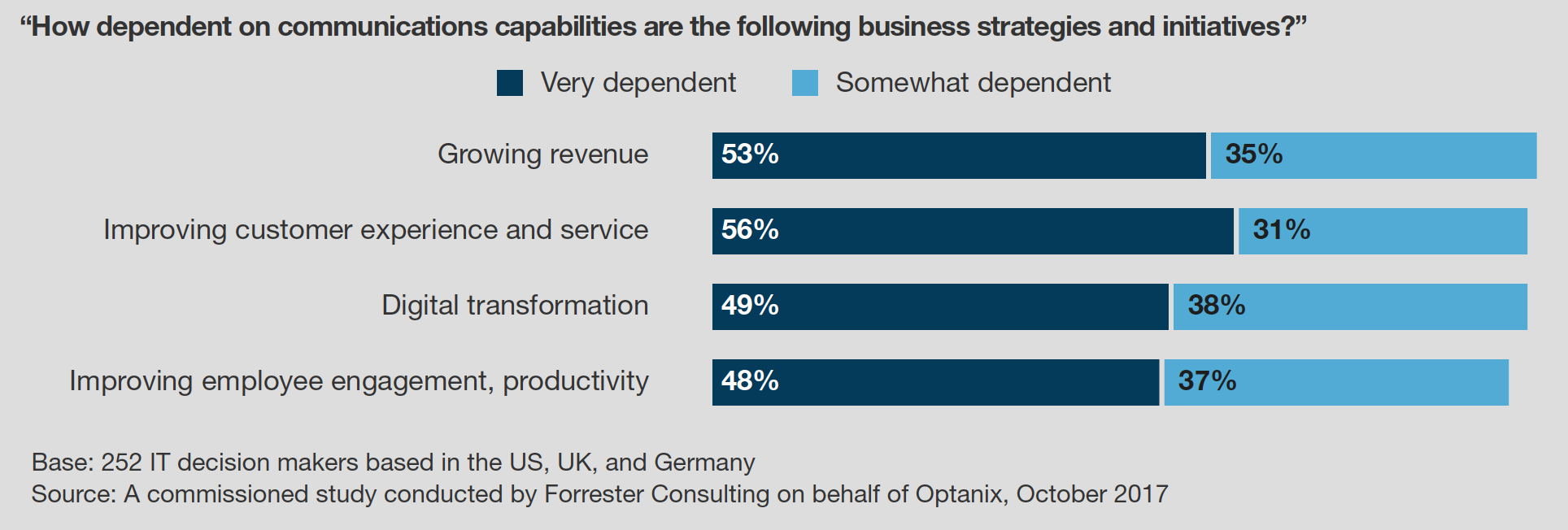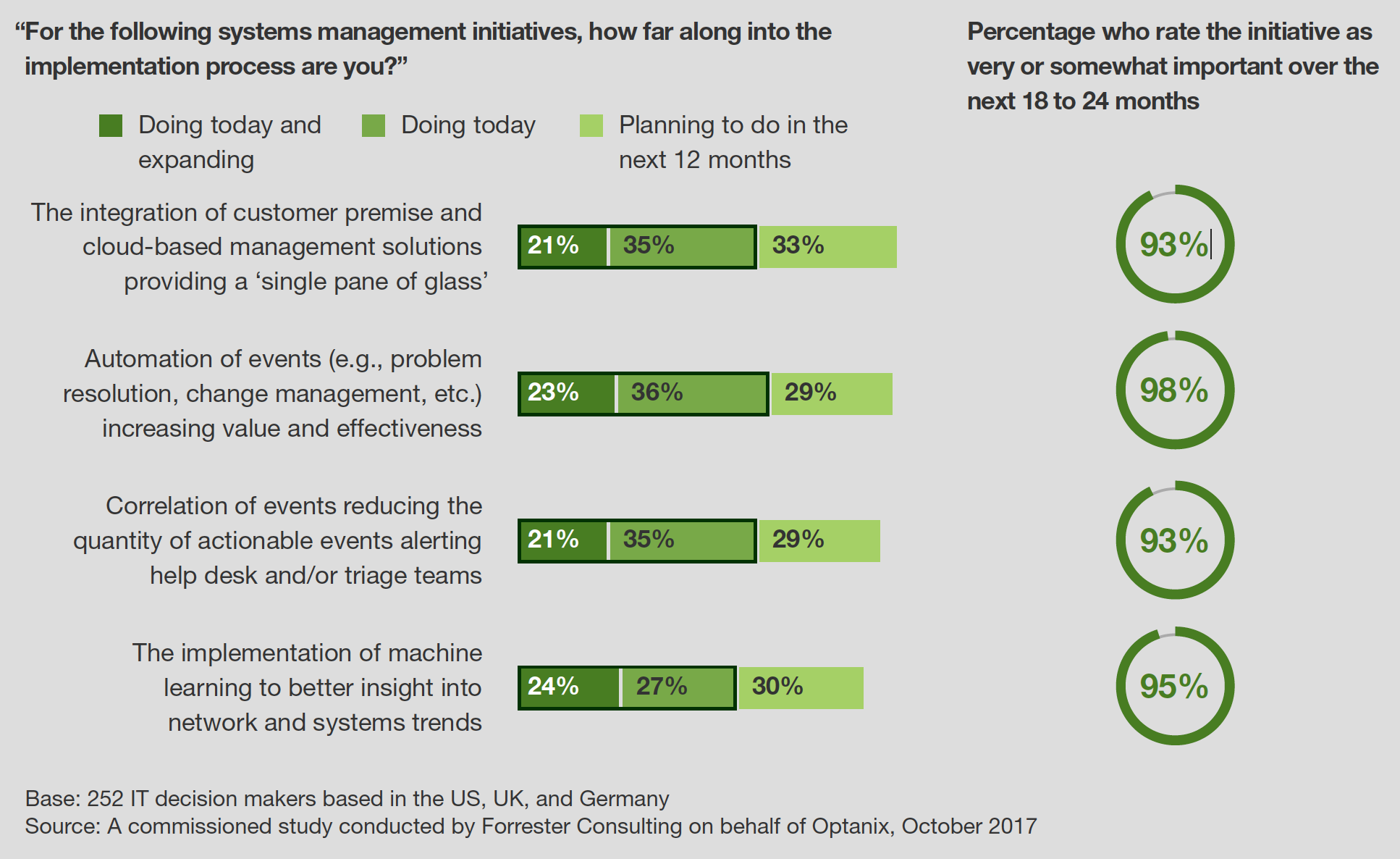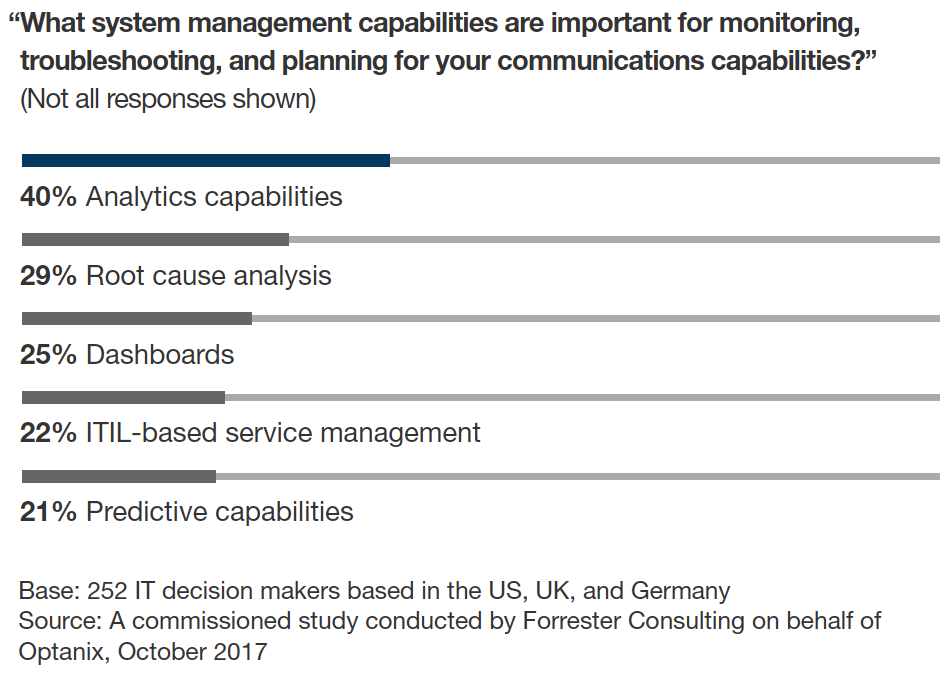
The IT Operations Juggling Act: Forrester Finds That You Can Fight Fires and Still Plan Ahead
A new study from Forrester Research explores how in today’s hyperconnected world, quality and availability of communications services are key influencers on customer and employee experience (CX and EX, respectively).
Commissioned by Optanix, the study is based on an online survey of 252 IT and communications infrastructure support professionals. Forrester asked questions to discover how reactive or proactive they are in managing outages, and how they use monitoring, analytics and other techniques to keep systems, employees and customers humming.
The report provides food for thought for IT organizations that are trying to determine how healthy their communications infrastructures are. The ability to fix everyday issues is one thing. But what about bigger problems, such as major outages, and disruptions in productivity? How well can you identify transient issues with voice and video quality that you won’t necessarily hear about from workers?
At the end of the day, IT organizations understand that a good communications ecosystem is critical to the overall success of the business. According to the survey results, 52% of IT organizations are very confident in their Wi-Fi infrastructure’s ability to meet customers’ expectations. But percentages are lower for video conferencing and voice communications, at 46% and 40%, respectively.
And, diving deeper, respondents see communications capabilities as key drivers of growing revenue, improving customer experience, digital transformation and improving employee engagement and productivity, as shown in Figure 1.

Figure 1.
Having established that they are aware of the importance of smooth IT operations, organizations are looking for ways to improve the wellness of communications systems.
For starters, putting in monitoring systems that can collect data, reduce the noise and produce a clean signal to reveal the true health of the ecosystem – independent of user reports – is absolutely critical if organizations want to move beyond reactivity and eliminate the constant threat of danger.
However, Forrester identified a significant disconnect – between organizations knowing they need to implement them and actually implementing them. When asked about what systems management initiatives they are implementing or planning, the study found that:
- Only about one-third had already put something in place
- Roughly another third are planning to implement in the next 12 months
- Less than a quarter are expanding on current initiatives.
As broken down in Figure 2, although they rank these initiatives as important, more than 40% of the organizations surveyed indicated they are not putting those critical monitoring capabilities in place today. But of course, closing the gap becomes more urgent over time as events grow in complexity.

Figure 2.
It is clear that IT teams can get ahead of the growing number of communications system incidents with automated analytic capabilities.
The IT professionals in the survey ranked analytics as the number one capability for a successful communications systems management solution, along with other reporting and predictive analysis tools that help firms think and plan ahead.
Without predictive analytics, comprehensive data and the ability to evaluate root causes of surface level symptoms, IT cannot proactively manage their communications system. Indeed, as shown in Figure 3, four of the top five capabilities for successful system management are related to reporting and analytics.

Figure 3.
In the survey, 54% of organizations self-identified as proactive or mostly proactive, versus 46% that were reactive or mostly reactive. As you might expect, the proactive IT teams saw greater confidence in being able to live up to customer expectations. They were consistently around 20 points higher in their confidence in each major element of their infrastructure.
IT organizations that put in place systems management solutions, thereby thinking more about the support they provide, are proactively creating a foundation of wellness for their businesses, leading to improved service quality, improved customer experience and increased availability.
As Forrester concludes, when people can connect and communicate seamlessly in this healthy ecosystem, collaboration, innovation and business success will thrive.
Click the image below to download the Forrester Research report “Firefighter or Strategic Manager: What IT Role Do You Fill?”
